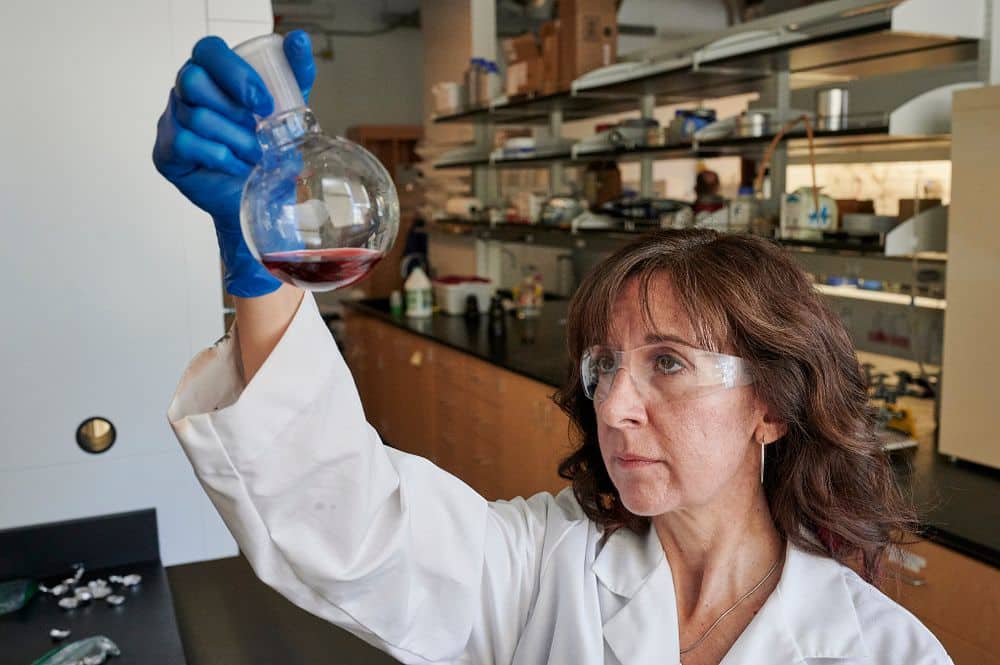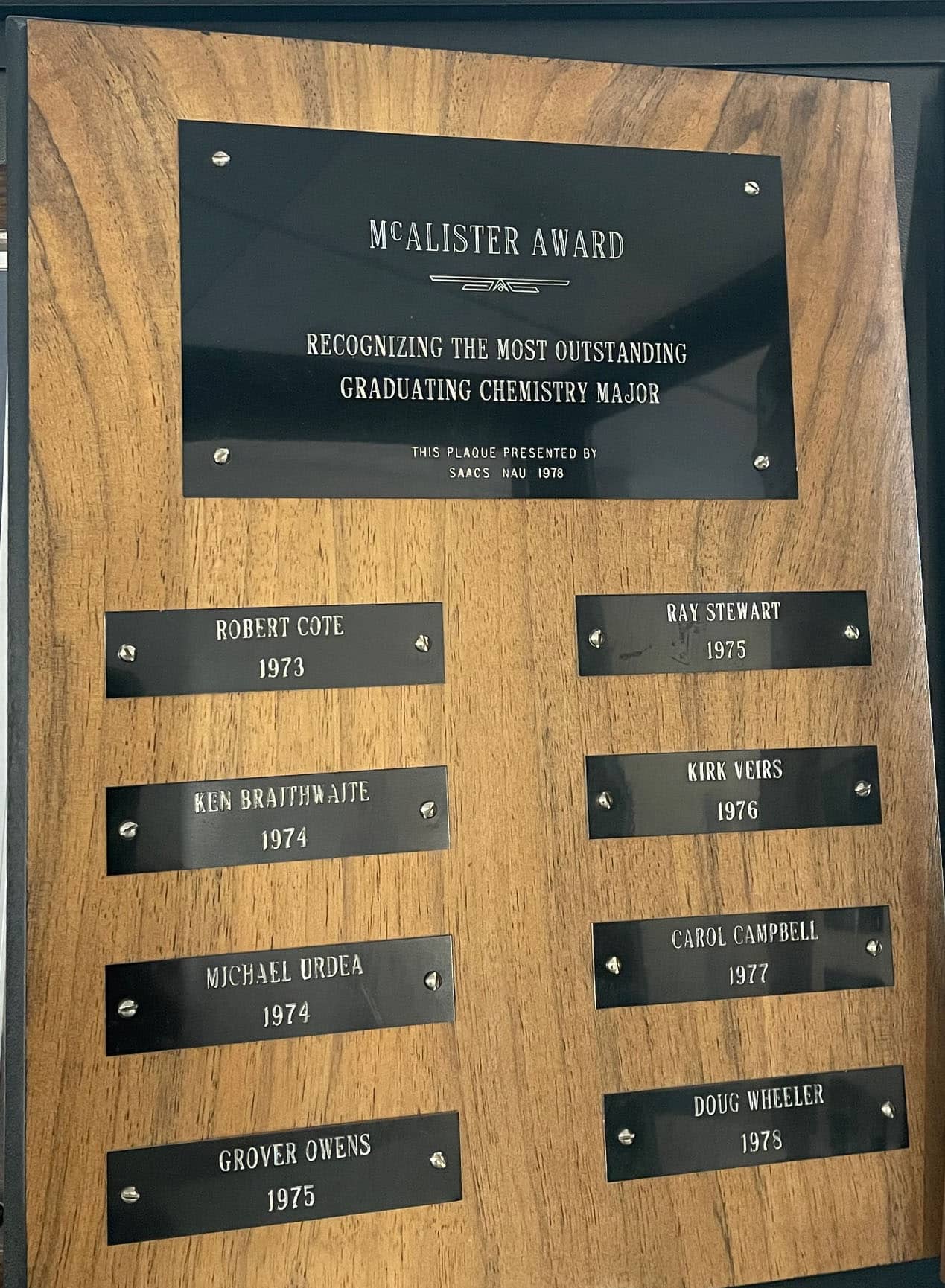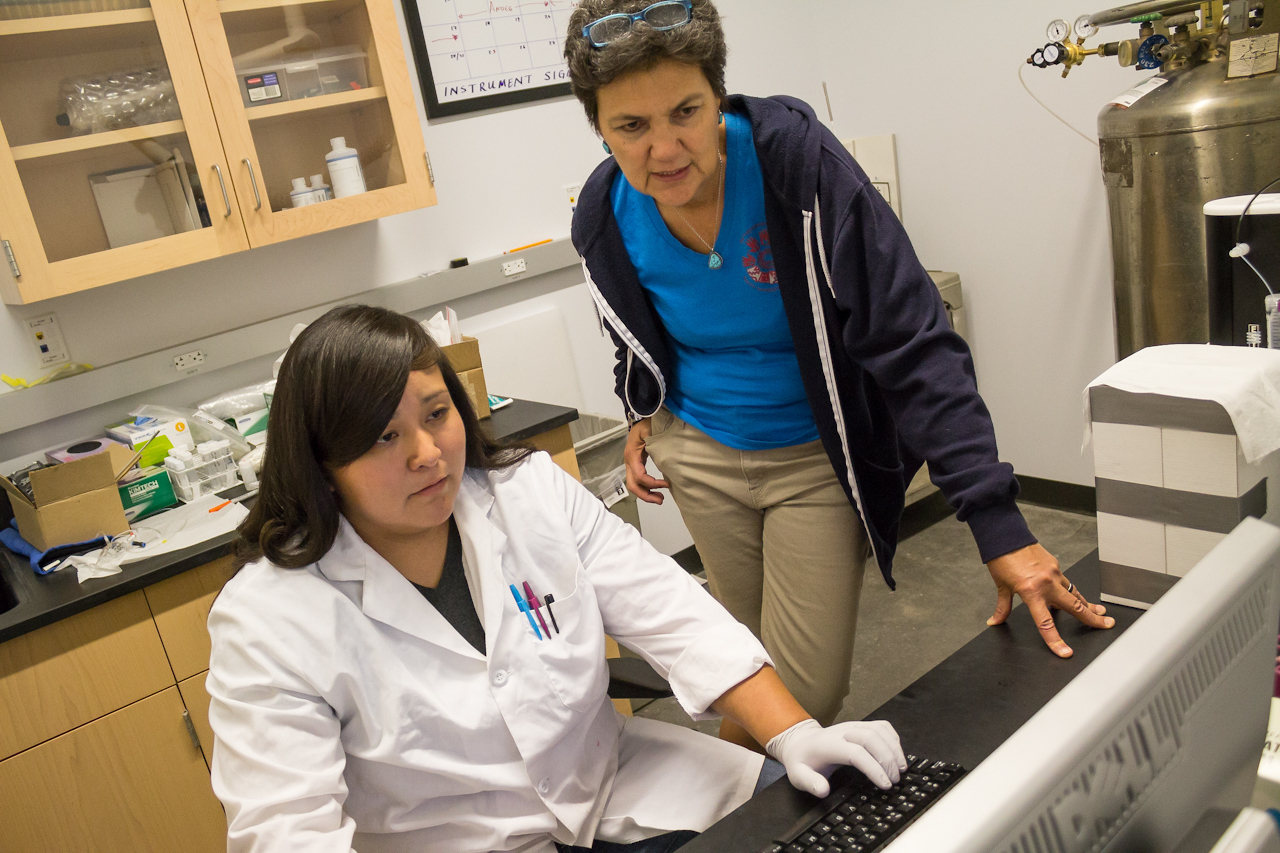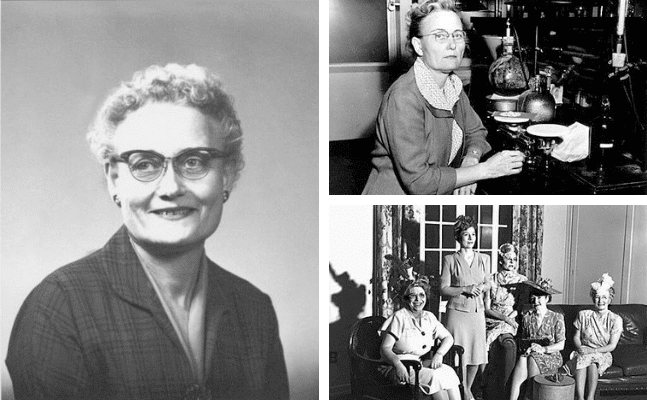Junia McAlister was born in 1899—the same year the Northern Arizona Normal School opened its doors in Flagstaff. Two years later, four women made up the first graduating class.
Decades later, “Miss Mac” came to what is now Northern Arizona University to teach chemistry. What she ended up doing was creating the chemistry department, carrying it on her shoulders for more than a decade and building a foundation of women in science at NAU. Her pioneering legacy continues in the Department of Chemistry and Biochemistry; NAU’s chemistry research faculty has always had a significantly higher percentage of women than the average. Right now it’s about 44%; in 2005-06, when a report showed that 13% of chemistry faculty were women, NAU’s department was 31% female.
Leaders say it’s the result of a concerted effort to build a welcoming, supportive department for people of all backgrounds, one built on the legacy of a woman who started as the only woman in the room and worked to ensure it didn’t stay that way.

“Junia McAlister was an absolute trailblazer,” said chemistry professor Cindy Browder, who called NAU’s gender inclusivity unmatched. “Not only did Miss Mac teach all the sub-disciplines of chemistry herself—most faculty teach in one or two areas of chemistry and do not have the expertise to be effective instructors in all five—but she did so at a time when women were rare in science, especially in chemistry. I like to think that Miss Mac’s influence has enabled this department to support women, even decades after her retirement.”
Learn more about other trailblazing women in the community.
A groundbreaking career
When McAlister came to Flagstaff in 1943 to teach in the wartime Navy V-12 program, she had two degrees in chemistry and had done advanced work and taught at several universities. She found her home here. In 1945, McAlister became the first chemistry professor at the Arizona State Teachers College, which later that year became the Arizona State College at Flagstaff. She was in fact the only chemistry professor for 11 years and taught up to seven different chemistry classes—a teaching load of more than 25 hours a week. She’s known as the founding faculty member of NAU’s chemistry program.
Just by itself, that’s an accomplishment, said Brandon Cruickshank, professor and chair of the Department of Chemistry and Biochemistry.
“This is no small feat teaching general chemistry, organic chemistry, biochemistry, physical chemistry, analytical chemistry and inorganic chemistry,” he said.
The chemistry faculty doubled in size in 1956—to two—a year later, and McAlister was promoted to associate professor of chemistry. By the time McAlister retired in 1968, there were 12 faculty in the Department of Chemistry, officially founded in 1965. In her 20-plus year career at NAU, she sponsored several student groups, participated in the planning for two science buildings—Frier Hall, now the Geology Building, and the Science Building, now occupied by physics and environmental sciences—and served as the regional chemist, consulting on projects such as a uranium processing mill and preparing chemicals for cloud-seeding projects.

“I always said, ‘Junia broke me in,’” he said. “She showed me the ropes in 1965 when I started at Arizona State College. I remember her as a very gracious lady with a wry sense of humor. At one time during World War II, she was THE chemistry department!”
McAlister was well-decorated in her time at NAU. She was named Woman of the Day in 1956 during the Associated Women Students’ Women’s Day activities, and in 1967 the Alumni Association presented her with the Alumni Distinguished Faculty Award. In 1968, the year she retired, she received the Distinguished Teacher Award of the Central Arizona Section of the American Chemical Society, an award presented to her by Nobel Prize laureate Arthur Kornberg. She was a member of ACS and several honor societies for decades.
She’s also the namesake of an award still given at NAU today. The Junia McAlister Award, established in 1973, recognizes one outstanding chemistry graduate each year; their names are listed on a series of plaques in the Science and Health building.
“We read portions of Junia’s biography at our awards ceremony when presenting the Junia McAlister Award,” Cruickshank said. “I usually get a bit choked up when reading the biography of such a wonderful person, teacher and ‘founder’ of our department.”

‘The only woman in the room’
That piece of her legacy has continued as well. Jani Ingram, Regents’ professor of chemistry and biochemistry, said the efforts the department makes to be welcoming—such as supporting each other’s professional activities and work/life balance—helps to recruit all new faculty.
“Having a number of women in a diverse number of roles in the department such as teaching, research and service, is really important in recruitment of new faculty who are women,” she said. “We do not focus on recruiting women faculty, but the environment is positive for women in our department, so it is attractive for candidates. It is important that our department was founded on the work of Junia McAlister as she was definitely a leader in a time when there were few women in chemistry.”
The critical mass of women and the welcoming, supportive department attracted Browder to NAU, as it did many others through the years.
“Prior to coming to NAU in 2007, I was frequently the only woman in the room,” she said. “I was the only female faculty member in my prior position in the Chemistry & Biochemistry department at Fort Lewis College, which was a very common situation for women chemists to be in. I’ve never had a female chemistry professor; I was one of two women in the group where I did my postdoctoral training (of 22 graduate students and postdocs); and I was one of two women in the group where I did my Ph.D. (of 12 graduate students). To say that NAU’s chemistry and biochemistry department looks different than the rest of the chemistry world is a tremendous understatement.”
Top photos from Cline Library’s Special Collections and Archives.
Heidi Toth | NAU Communications
(928) 523-8737 | heidi.toth@nau.edu




